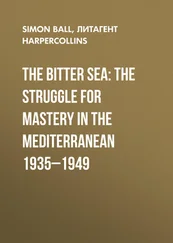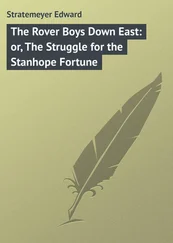Чарльз Дарвин - The Origin of Species by Means of Natural Selection Or, the Preservation of Favoured Races in the Struggle for Life
Здесь есть возможность читать онлайн «Чарльз Дарвин - The Origin of Species by Means of Natural Selection Or, the Preservation of Favoured Races in the Struggle for Life» весь текст электронной книги совершенно бесплатно (целиком полную версию без сокращений). В некоторых случаях можно слушать аудио, скачать через торрент в формате fb2 и присутствует краткое содержание. Год выпуска: 1999, Жанр: Биология, на английском языке. Описание произведения, (предисловие) а так же отзывы посетителей доступны на портале библиотеки ЛибКат.
- Название:The Origin of Species by Means of Natural Selection Or, the Preservation of Favoured Races in the Struggle for Life
- Автор:
- Жанр:
- Год:1999
- ISBN:нет данных
- Рейтинг книги:3 / 5. Голосов: 1
-
Избранное:Добавить в избранное
- Отзывы:
-
Ваша оценка:
- 60
- 1
- 2
- 3
- 4
- 5
The Origin of Species by Means of Natural Selection Or, the Preservation of Favoured Races in the Struggle for Life: краткое содержание, описание и аннотация
Предлагаем к чтению аннотацию, описание, краткое содержание или предисловие (зависит от того, что написал сам автор книги «The Origin of Species by Means of Natural Selection Or, the Preservation of Favoured Races in the Struggle for Life»). Если вы не нашли необходимую информацию о книге — напишите в комментариях, мы постараемся отыскать её.
The Origin of Species by Means of Natural Selection Or, the Preservation of Favoured Races in the Struggle for Life — читать онлайн бесплатно полную книгу (весь текст) целиком
Ниже представлен текст книги, разбитый по страницам. Система сохранения места последней прочитанной страницы, позволяет с удобством читать онлайн бесплатно книгу «The Origin of Species by Means of Natural Selection Or, the Preservation of Favoured Races in the Struggle for Life», без необходимости каждый раз заново искать на чём Вы остановились. Поставьте закладку, и сможете в любой момент перейти на страницу, на которой закончили чтение.
Интервал:
Закладка:
It is scarcely possible that the above slight movements, due to a touch or shake, in the young and growing organs of plants, can be of any functional importance to them. But plants possess, in obedience to various stimuli, powers of movement, which are of manifest importance to them; for instance, towards and more rarely from the light—in opposition to, and more rarely in the direction of, the attraction of gravity. When the nerves and muscles of an animal are excited by galvanism or by the absorption of strychnine, the consequent movements may be called an incidental result, for the nerves and muscles have not been rendered specially sensitive to these stimuli. So with plants it appears that, from having the power of movement in obedience to certain stimuli, they are excited in an incidental manner by a touch, or by being shaken. Hence there is no great difficulty in admitting that in the case of leaf-climbers and tendril-bearers, it is this tendency which has been taken advantage of and increased through natural selection. It is, however, probable, from reasons which I have assigned in my memoir, that this will have occurred only with plants which had already acquired the power of revolving, and had thus become twiners.
I have already endeavoured to explain how plants became twiners, namely, by the increase of a tendency to slight and irregular revolving movements, which were at first of no use to them; this movement, as well as that due to a touch or shake, being the incidental result of the power of moving, gained for other and beneficial purposes. Whether, during the gradual development of climbing plants, natural selection has been aided by the inherited effects of use, I will not pretend to decide; but we know that certain periodical movements, for instance the so-called sleep of plants, are governed by habit.
I have now considered enough, perhaps more than enough, of the cases, selected with care by a skilful naturalist, to prove that natural selection is incompetent to account for the incipient stages of useful structures; and I have shown, as I hope, that there is no great difficulty on this head. A good opportunity has thus been afforded for enlarging a little on gradations of structure, often associated with strange functions—an important subject, which was not treated at sufficient length in the former editions of this work. I will now briefly recapitulate the foregoing cases.
With the giraffe, the continued preservation of the individuals of some extinct high-reaching ruminant, which had the longest necks, legs, etc., and could browse a little above the average height, and the continued destruction of those which could not browse so high, would have sufficed for the production of this remarkable quadruped; but the prolonged use of all the parts, together with inheritance, will have aided in an important manner in their co-ordination. With the many insects which imitate various objects, there is no improbability in the belief that an accidental resemblance to some common object was in each case the foundation for the work of natural selection, since perfected through the occasional preservation of slight variations which made the resemblance at all closer; and this will have been carried on as long as the insect continued to vary, and as long as a more and more perfect resemblance led to its escape from sharp-sighted enemies. In certain species of whales there is a tendency to the formation of irregular little points of horn on the palate; and it seems to be quite within the scope of natural selection to preserve all favourable variations, until the points were converted, first into lamellated knobs or teeth, like those on the beak of a goose—then into short lamellae, like those of the domestic ducks—and then into lamellae, as perfect as those of the shoveller-duck—and finally into the gigantic plates of baleen, as in the mouth of the Greenland whale. In the family of the ducks, the lamellae are first used as teeth, then partly as teeth and partly as a sifting apparatus, and at last almost exclusively for this latter purpose.
With such structures as the above lamellae of horn or whalebone, habit or use can have done little or nothing, as far as we can judge, towards their development. On the other hand, the transportal of the lower eye of a flat-fish to the upper side of the head, and the formation of a prehensile tail, may be attributed almost wholly to continued use, together with inheritance. With respect to the mammae of the higher animals, the most probable conjecture is that primordially the cutaneous glands over the whole surface of a marsupial sack secreted a nutritious fluid; and that these glands were improved in function through natural selection, and concentrated into a confined area, in which case they would have formed a mamma. There is no more difficulty in understanding how the branched spines of some ancient Echinoderm, which served as a defence, became developed through natural selection into tridactyle pedicellariae, than in understanding the development of the pincers of crustaceans, through slight, serviceable modifications in the ultimate and penultimate segments of a limb, which was at first used solely for locomotion. In the avicularia and vibracula of the Polyzoa we have organs widely different in appearance developed from the same source; and with the vibracula we can understand how the successive gradations might have been of service. With the pollinia of orchids, the threads which originally served to tie together the pollen-grains, can be traced cohering into caudicles; and the steps can likewise be followed by which viscid matter, such as that secreted by the stigmas of ordinary flowers, and still subserving nearly but not quite the same purpose, became attached to the free ends of the caudicles—all these gradations being of manifest benefit to the plants in question. With respect to climbing plants, I need not repeat what has been so lately said.
It has often been asked, if natural selection be so potent, why has not this or that structure been gained by certain species, to which it would apparently have been advantageous? But it is unreasonable to expect a precise answer to such questions, considering our ignorance of the past history of each species, and of the conditions which at the present day determine its numbers and range. In most cases only general reasons, but in some few cases special reasons, can be assigned. Thus to adapt a species to new habits of life, many co-ordinated modifications are almost indispensable, and it may often have happened that the requisite parts did not vary in the right manner or to the right degree. Many species must have been prevented from increasing in numbers through destructive agencies, which stood in no relation to certain structures, which we imagine would have been gained through natural selection from appearing to us advantageous to the species. In this case, as the struggle for life did not depend on such structures, they could not have been acquired through natural selection. In many cases complex and long-enduring conditions, often of a peculiar nature, are necessary for the development of a structure; and the requisite conditions may seldom have concurred. The belief that any given structure, which we think, often erroneously, would have been beneficial to a species, would have been gained under all circumstances through natural selection, is opposed to what we can understand of its manner of action. Mr. Mivart does not deny that natural selection has effected something; but he considers it as "demonstrably insufficient" to account for the phenomena which I explain by its agency. His chief arguments have now been considered, and the others will hereafter be considered. They seem to me to partake little of the character of demonstration, and to have little weight in comparison with those in favour of the power of natural selection, aided by the other agencies often specified. I am bound to add, that some of the facts and arguments here used by me, have been advanced for the same purpose in an able article lately published in the "Medico-Chirurgical Review."
Читать дальшеИнтервал:
Закладка:
Похожие книги на «The Origin of Species by Means of Natural Selection Or, the Preservation of Favoured Races in the Struggle for Life»
Представляем Вашему вниманию похожие книги на «The Origin of Species by Means of Natural Selection Or, the Preservation of Favoured Races in the Struggle for Life» списком для выбора. Мы отобрали схожую по названию и смыслу литературу в надежде предоставить читателям больше вариантов отыскать новые, интересные, ещё непрочитанные произведения.
Обсуждение, отзывы о книге «The Origin of Species by Means of Natural Selection Or, the Preservation of Favoured Races in the Struggle for Life» и просто собственные мнения читателей. Оставьте ваши комментарии, напишите, что Вы думаете о произведении, его смысле или главных героях. Укажите что конкретно понравилось, а что нет, и почему Вы так считаете.












